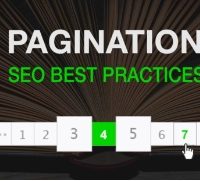How Often Should Important Keywords Appear On Your Page?
Table of Contents
Importance of Keyword Frequency in SEO
The Role of Keyword Frequency in SEO
Keywords are the backbone of SEO, playing an important role in determining the visibility and ranking of a website. One key aspect of keywords is their frequency on a page. How often important keywords appear on a page can significantly impact SEO performance.
Search engine bots crawl websites to understand their content and relevance to specific search queries. The frequency of important keywords on a page helps search engines determine the topic or focus of the content. However, the overuse or underuse of keywords can negatively affect SEO.
It is important to strike a balance when it comes to keyword frequency. Stuffing a page with keywords to manipulate search engine rankings can lead to penalties and a drop in rankings. On the other hand, having too few important keywords may result in search engines not fully understanding the content’s context and relevance.

Conduct keyword research to identify relevant terms and phrases your target audience will use in search queries. These important keywords should be naturally integrated into the content, ensuring users a seamless reading experience while signaling the page’s topic to search engines.
A best practice is to strategically place important keywords in prominent areas such as the page title, headings, meta descriptions, and throughout the body content. Aim for a keyword density that feels natural and aligns with the overall theme of the page. Additionally, incorporating variations of the main keywords (long-tail keywords) can help acquire a wider range of search queries.
The frequency of important keywords on a page plays a significant role in SEO. Following best practices for keyword integration and avoiding keyword stuffing can improve your website’s visibility and ranking on SERPs. Remember, quality content that provides value to users should always be the primary focus, with keywords used strategically to enhance searchability and relevance.
Strategies for Natural Keyword Integration
When optimizing your website for search engines, one of the key aspects to consider is how often important keywords should appear on your page. This balance is crucial for improving your SEO ranking and ensuring that your content is easily discoverable by users searching for relevant information.
A good rule of thumb ensures that important keywords appear naturally throughout your content. Keyword stuffing, or overloading your content with keywords unnaturally, can lead to penalties from search engines and negatively impact your SEO efforts. Instead, focus on integrating your keywords seamlessly into your content so that it reads well and provides value to your readers.

To achieve a natural keyword integration, consider incorporating your important keywords in the following key areas:
1. Title Tag: Include your primary keyword in your page’s title tag to give search engines a clear indication of your content.
2. Meta Description: Write a compelling meta description that contains relevant keywords to improve click-through rates from search engine results pages.
3. Heading Tags: Use heading tags (H1, H2, etc.) to structure your content and include important keywords in headings to emphasize their relevance.
4. Body Content: Integrate your important keywords organically throughout the body of your content. Aim for a keyword density of around 1-2% to signal the main topics covered in your content to search engines.
5. Image Alt Text: Optimize your image alt text with relevant keywords to improve accessibility and provide additional context to search engines.
By following these strategies for natural keyword integration, you can enhance your SEO efforts and improve the visibility of your content online. Remember to prioritize the user experience and create high-quality, informative content that resonates with your audience while incorporating important keywords naturally and meaningfully.
Understanding and Balancing Keyword Density for SEO Success
When optimizing your website for search engines, understanding how often important keywords should appear on your page is crucial for achieving optimal results. Balancing keyword density is a key aspect of on-page SEO that can significantly impact your search engine rankings. Keyword density refers to the number of times your target keywords appear on a webpage, considering the total number of words on that page.
Maintaining an optimal keyword density is essential for improving your website’s visibility on SERPs (Search Engine Result Pages). Note that keyword density alone is not the sole determinant of SEO success. Search engines like Google now prioritize user-focused content that provides value and relevance to readers over keyword-stuffed content.

Striking the right keyword-density balance involves integrating your important keywords naturally throughout your content. Overstuffing your content with important keywords can harm your SEO efforts and result in a poor user experience (UX). Google and other search engines have become more sophisticated in recognizing keyword stuffing and can penalize websites that engage in this practice.
To achieve optimal SEO results, create high-quality, engaging content that naturally incorporates your important keywords. Conduct keyword research to identify relevant keywords that match your target audience and align with your content goals. You can enhance your website’s visibility and attract more organic traffic by strategically placing your important keywords in key places such as titles, headings, meta descriptions, and body content.
Maintaining a balanced keyword density is essential for SEO success. By prioritizing user experience and providing valuable, keyword-rich content, you can improve your site’s search engine rankings and drive more organic traffic. Remember, SEO is a long-term strategy, and consistently optimizing your content based on best practices will yield sustainable results in the competitive online landscape.
The Impact of Keyword Stuffing on Search Engine Rankings
Keyword stuffing is an outdated and frowned upon SEO technique that overloads web pages with keywords to manipulate search engine rankings. While it may have been effective in the early days of search engines, modern algorithms are very sophisticated and can easily detect this practice. As a result, websites that engage in keyword stuffing often face penalties that harm their search engine rankings rather than improving them.
Search engines prioritize providing users with high-quality, relevant content that addresses their queries. A webpage stuffed with keywords often results in content that is awkward, repetitive, and lacking value. It provides a poor user experience and goes against the search engines’ goal of delivering useful and informative content to users.

Moreover, keyword stuffing can lead to a high keyword density, the percentage of times a keyword or keyphrase appears compared to the total number of words on a webpage. Excessive keyword density can flag a webpage as spammy or low-quality, further damaging its search engine rankings. Maintaining a natural and organic keyword density is essential to ensure that the content remains reader-friendly while still being optimized for search engines.
Keyword stuffing is a counterproductive SEO practice that can severely affect a website’s rankings. Instead of focusing on manipulating algorithms with excessive keyword usage, website owners should prioritize creating high-quality, valuable content that genuinely addresses the needs and interests of their target audience. By following best practices for SEO, such as natural keyword integration and providing relevant information, websites can improve their search engine rankings authentically and sustainably.
Utilizing Long-tail Keywords for Enhanced SEO Performance
Long-tail keywords are crucial in enhancing SEO performance by targeting specific search queries that are more detailed and less competitive than generic keywords. These keywords typically consist of three or more words and are highly specific to your products or services. By incorporating long-tail keywords into your content, you can attract high-intent traffic from users closer to the sales funnel’s conversion stage.
When incorporating long-tail keywords into your content, you must conduct vivid keyword research to identify relevant terms that align with your target audience’s search intent. Tools like Google Keyword Planner, SEMrush, and Ahrefs can help you discover long-tail keywords with sufficient search volume and low competition.
Once you have identified a list of potential long-tail keywords, strategically integrate them into your website’s content, including blog posts, product descriptions, meta tags, and headers. To ensure a natural and seamless integration, focus on creating high-quality, informative content that provides value to your readers while incorporating long-tail keywords in a way that feels organic.

It is important to avoid keyword stuffing, as this practice can harm your website’s SEO performance and lead to potential penalties from search engines. Instead, aim for a keyword density that feels natural within the context of your content. A good rule of thumb is to mention long-tail keywords 2-4 times per 500 words of content, but this can vary based on the length and depth of your pages.
In addition to on-page content, you can optimize your website’s URL structure, meta descriptions, and image alt text with relevant long-tail keywords to improve your site’s overall search visibility. By diversifying your keyword strategy to include long-tail variations, you can capture valuable traffic from highly targeted search queries and increase your chances of ranking higher in search engine results pages.
Leveraging long-tail keywords is a powerful SEO strategy to help your website attract more qualified leads and improve its visibility in search engine results. You can enhance your SEO performance and drive sustainable organic traffic growth over time by conducting thorough keyword research, creating high-quality content, and strategically integrating long-tail keywords across your site.
Key Takeaway:
Making the correct balance in keyword frequency is crucial for effective SEO. Important keywords naturally throughout the content are essential for optimizing web pages. Avoiding keyword stuffing and utilizing long-tail keywords can significantly enhance search engine rankings and overall SEO performance. Balancing keyword density and strategically integrating keywords can lead to better visibility and higher rankings on search engine results pages. By understanding the significance of keyword frequency, implementing effective strategies for keyword integration, and focusing on long-tail keywords, websites can improve their SEO performance and attract more organic traffic.
Conclusion
In the SEO landscape, understanding keyword frequency’s role is paramount. The strategic deployment of important keywords throughout your website forms the foundation of effective SEO practices. By integrating these keywords naturally into your content, you can enhance your website’s visibility and relevance to search engines. Striking a balance between keyword density and user experience is crucial in optimizing your website for search engine rankings.
One of the key strategies for successful SEO is the natural integration of important keywords into your content. Rather than forcefully inserting keywords, focus on creating valuable and informative content that naturally includes these keywords. Maintaining a seamless flow of keywords within your text can improve your website’s ranking without compromising the user experience. This approach enhances your website’s visibility and establishes credibility and authority in your niche.
Balancing keyword density is essential for achieving optimal results in SEO. While it is important to include relevant keywords throughout your content, overloading your website with keywords can harm your search engine rankings. Search engines may penalize your websites if you stuff keywords in the content, a black hat SEO technique. You can maintain an ideal keyword density that enhances your website’s SEO performance by strategically placing keywords in key areas such as headers, titles, meta descriptions, and body content.
The detrimental impact of keyword stuffing on search engine rankings cannot be overstated. Search engines continuously refine their algorithms to prioritize high-quality, user-centric content. Websites that resort to keyword stuffing risk being penalized or even removed from search engine results pages. To avoid such consequences, prioritize creating informative, engaging content that provides value to your audience. Using keywords judiciously and organically can improve your website’s SEO performance while maintaining compliance with search engine guidelines.
Long-tail keywords in your SEO strategy can significantly enhance your website’s search results performance. Long-tail keywords are specific, detailed phrases targeting a niche audience seeking information or products. By including long-tail keywords in your content, you can attract relevant traffic to the site and improve your chances of ranking well for specific search queries. Additionally, long-tail keywords are less competitive than generic terms, making it easier for your site to stand out in search results.
The frequency and placement of important keywords play a crucial role in optimizing your site for different search engines. You can enhance your website’s SEO performance and visibility by implementing natural keyword integration strategies, balancing keyword density, avoiding keyword stuffing, and leveraging long-tail keywords. Focus on creating high-quality, user-centric content that matches your target audience while incorporating relevant keywords to improve your search engine rankings. Embrace these SEO best practices to elevate your website’s online presence and drive organic traffic to your digital assets.



